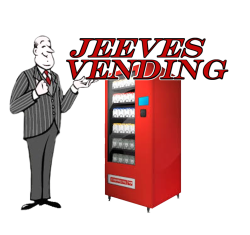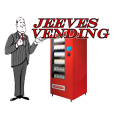Why Buying Vending Machine Locations Based on Yearly Revenue is a Bad Investment
Keywords: vending machine ROI, buying vending locations, vending business tips, vending machine routes, passive income, vending machine investment, how to get vending locations
Introduction: The Vending Machine Dream vs. Reality
The vending machine industry is often marketed as a golden ticket to passive income. On the surface, it makes sense: set up a few machines, stock them occasionally, and let the cash roll in. That dream can quickly turn sour if your strategy involves buying vending machine locations based solely on yearly revenue.
Here’s the truth: If you’re new to vending and start by purchasing revenue-heavy locations, you’re not investing — you’re buying a job. And worse, you’re doing it at a poor return on investment (ROI).
The Problem With Buying Vending Locations Based on Revenue
1. Revenue Is Not Profit
Just because a location generates $10,000 per year doesn’t mean you’re pocketing that. In fact, after accounting for:
- Product costs
- Gas and travel time
- Machine maintenance
- Location commissions
- Theft or product spoilage
You might only be left with 25-35% profit — if you’re lucky.
Buying a vending route advertised at $10,000/year in revenue could mean just $250/month in profit. If you paid $10,000 for that route, that’s a terrible ROI — a 30% return over four years before even breaking even (and that’s assuming nothing goes wrong).
2. You’re Buying a Job, Not a Business
Most people get into vending to build a semi-passive income stream. But if you purchase a location without scale, you’re signing up to:
- Drive out weekly or biweekly to restock
- Handle maintenance issues
- Manage product inventory
- Deal with slow machines that can’t be easily moved
Unless you already own 20–30+ machines and a team or system, buying a few routes is just buying yourself a part-time job — not a scalable business.
3. You’re Paying for Yesterday’s Performance
Vending machine route sellers typically base prices on previous 12 months of revenue — but that’s past performance, not future guarantee.
- A location’s foot traffic may decline.
- A business might move or close.
- Employee habits change (if your machine is in a break room).
- Management might replace you with a different vendor.
You’re paying a premium for historical performance, not a guaranteed future.
The Smarter Way to Acquire Vending Locations
If you’re serious about building a successful vending business, there’s a better, lower-risk path:
1. Secure Your Own Locations
Use proven outreach methods to find high-traffic, low-competition spots:
- Cold call or visit local businesses
- Offer a revenue share or donation to a cause
- Use online business directories to find gyms, salons, or break rooms
- Network with commercial real estate agents or property managers
By doing the legwork, you acquire locations at no upfront cost, except for your time and effort. That gives you better ROI and full control over how your machines perform.
2. Test and Grow Strategically
Start small. Buy a few machines, find your own locations, and track their performance. Once you understand what works in your market:
- Scale up by adding more machines to your best-performing sites
- Move underperforming machines to better spots
- Outsource your route servicing as profits grow
This way, you build a real vending business — not just a collection of low-performing jobs.
3. Negotiate Smartly (If You Still Want to Buy Routes)
If you do consider buying a vending route, be strategic:
- Pay based on net profit, not revenue
- Ask for at least 6–12 months of sales records
- Verify location contracts (many are handshake deals)
- Talk to location owners or managers directly
Only buy routes that fit into your existing system — and never overpay for someone else’s declining asset.
Final Thoughts: Don’t Buy the Dream — Build It
The vending business can be incredibly rewarding — but only if approached like a business, not a shortcut to income.
Buying vending locations based on revenue is usually a poor investment with long payback periods, declining profits, and little room for growth. Instead, put your energy into building your own route, securing better locations, and reinvesting your profits. That’s the real path to scalable vending success.
Ready to Build a Better Vending Business?
Start with what matters most: profitable locations that you control. Learn how to approach businesses, pitch your machines, and lock in steady traffic.
👉 Need help with cold calling scripts or a vending pitch deck? Let us know — we can help you get started the right way.
Let me know if you’d like a shorter version, social media captions, or accompanying email copy for this post.



